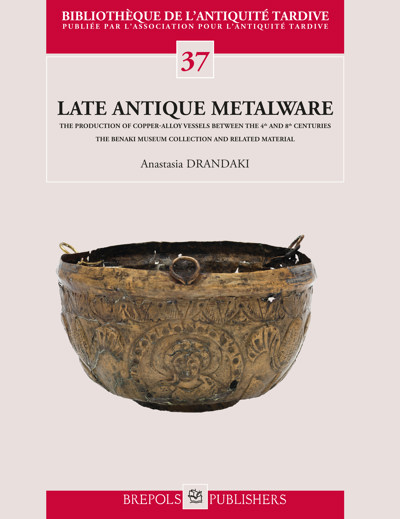
Ancient Churches of Rome from the Fourth to the Seventh Century
The Dawn of Christian Architecture in the West
Hugo Brandenburg
- Pages: 336 p.
- Size:220 x 280 mm
- Illustrations:200 col.
- Language(s):English
- Publication Year:2005
- € 90,00 EXCL. VAT RETAIL PRICE
- ISBN: 978-2-503-51747-6
- Paperback
- Out of Print
With its official recognition by the Roman state, the Christian community suddenly enjoyed the sympathy of the highest authorities, wide public attention and a great afflux, and with imperial support architectural masterpieces were erected, the Lateran Basilica, St. Peter's and San Paolo fuori le mura, whose dimensions and magnificence bore every comparison with pagan sanctuaries. The great rise in martyr worship furthermore prompted the construction of numerous memorial churches outside the city gates, which at the same time served as burial grounds for believers. Rome was transformed from capital of the Empire to capital of Christianity boasting the tombs of the two prime apostles Peter and Paul and numerous other witnesses of Christ. Alongside these monuments of papal and imperial representation, several tituli, parish churches, were founded along the main thoroughfares inside the city to create visible landmarks of Christianity and satisfy the pastoral needs of an ever-growing community.
Focusing on these formative centuries of Christianity, from the reign of Constantine until the emergence of the Medieval world order in the Carolingian age, Hugo Brandenburg offers a broad panoramic view of Christian church architecture in Rome from its conception to the establishment of canonical church types. Throughout, the author treats the archaeological remains as speaking testimonies, articulating the intentions, motivations and self-perception of Rome's early Christian community
It was the Roman profane basilica, not any temple architecture, which the Christian community adopted, thus deliberately seeking a clear break with pagan building practice. The basilica proved to be a flexible and infinitely variable type of building, which could be adapted to all liturgical requirements and local topographic conditions. Apart from new monumental creations, it is especially the modest tituli installed in the reception halls of former Roman aristocratic houses, whose minimal, but decisive, architectural amendments most clearly show the essential features, which Christian liturgy required, such as a lengthwise partitioned hall of assembly, a separate space for the clergy at the front and behind it an apse on one short side.
The author directs our attention to the interiors of church buildings, which instead of striving for homogeneity are organised in an unprecedented spatial hierarchy, whose goal and visual culminating point are the apse and the eucharistic altar at the far end. It is a hierarchy expressed in a wide range of subtle differentiations, such as lighting arrangement, the usage of a trabeated entablature in the nave as opposed to arcades in the aisles, or of precious reused capitals as opposed to capitals of contemporary production. Spoils were now being reused on a large scale, but in an unsystematic manner merely as single precious items for luxurious and resplendent interior decorations, completed by mosaics, wall paintings and elaborate revetments of marble slabs. This selective and highly deliberate usage of traditional, classical shapes and iconographies for new architectural creations attests a radically different aesthetic and spiritual attitude towards the artistic heritage of Rome and distinctly announces the end of Antiquity and the coming of a new era.
This lucid and detailed exposition of more than 50 early churches of Rome from the fourth to the seventh century, which draws together archaeological, documentary and literary sources, will appeal to the layman and the specialist alike. It contains an up-to-date bibliography on each subject and gives ample space to the discussion of recent developments in the field, whereby Hugo Brandenburg offers his own well-founded interpretations of the evidence and shows his immense expertise of early Christian architecture. The present work is lavishly illustrated with original plans and drawings and exclusive photographs especially taken for this volume, which allow an unusually detailed visual insight into the sacred architecture of early Christian Rome.
Hugo Brandenburg hence accompanies the reader through the material and spiritual world of Late Antiquity and aptly evokes "the genius of an art", to speak with Thomas Merton, "full of spiritual vitality and earnestness and power - an art that was tremendously serious and alive and eloquent and urgent in all that it had to say.




